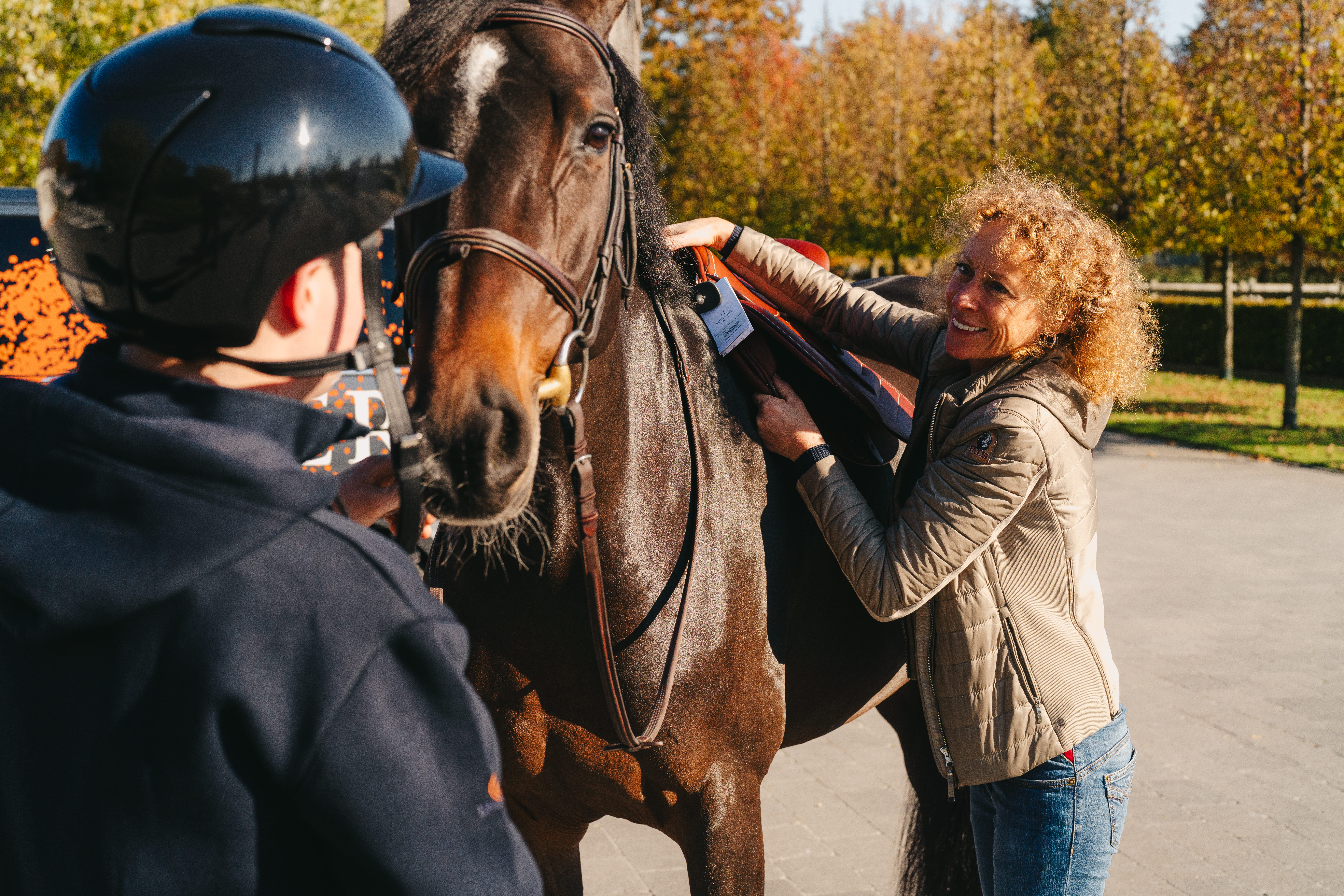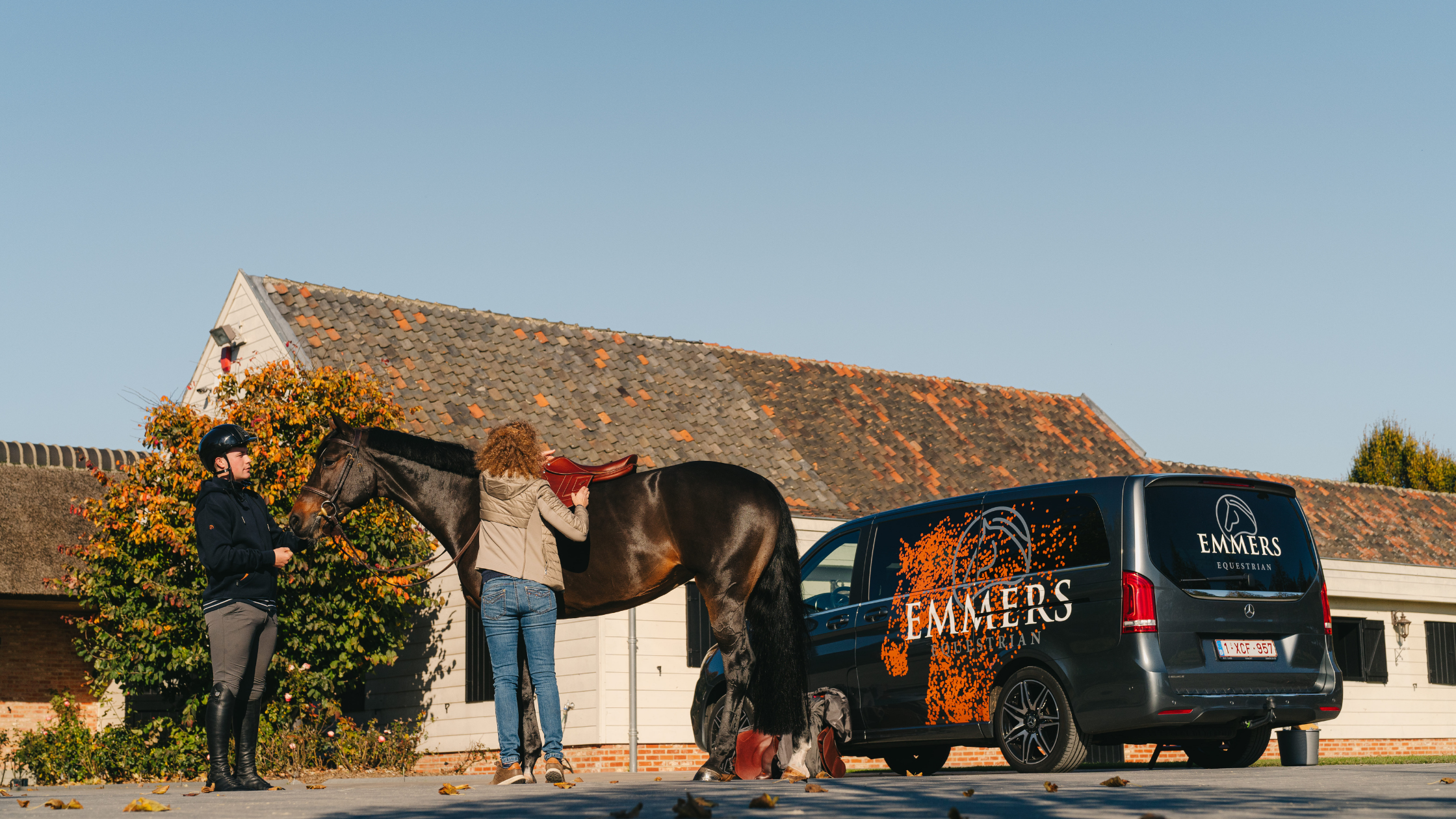HOW DO YOU RECOGNIZE A poorly FITting SADDLE?
Did you know many riding problems and horse's injuries are often caused by a poorly fitting saddle? Save yourself and your horse from this common mistake and don't underestimate the importance of a properly fitting saddle.
But what are the most obvious signs of an ill-fitting saddle? We are happy to help you recognize them.
6 SIGNALS your saddle is damaging your horse's health and performance:
On the one hand, you can see signs of a badly fitting saddle in the reaction and condition of your horse:
- The most visible and easily recognizable signs are wounds or chafing under the saddle after riding. Be alert for wounds or rubs while taking care of your horse after riding.
- Does your horse show annoying or grumpy behaviour during saddling or girthing? Of course your horse can experience an off day, just like us. However, if this behaviour occurs more often, it can be a very good reason to have your saddle checked. Without a doubt, you don't like to walk in riding boots that are too small either.
- Does your horse regularly shake its head while riding? This may be caused by the teeth or the bit you are using. Nonetheless, this can also indicate a poorly fitting saddle. Does the head shaking occur mainly in the corners or during twists? This can mean your horse is experiencing pain as a result of a pressure point on the saddle.
- Do you have the impression that your horse is not really relaxed while riding? Maybe you have the feeling your horse is struggling with you? Look for signs like a 'short stride' or difficulty performing specific exercises. This can also be a sign that your saddle does not fit properly and causes pain for your horse.
- If your horse's back shows reduced muscle tone, this could be a sign of a badly fitting saddle as well. You can recognize the limited muscularity of your horse's back, by the visiblity of the spine, or vertebral column. A nicely muscular horse, does not show much of the spine.
- Is your horse's position askew or imbalanced? An uneven shape or bad condition of the hooves can play a major role in the fitting of the saddle. It is important to regularly (every 4 to 6 weeks) have your horse's hooves trimmed by a good farrier. Determining how frequent your farrier visits is different for every horse. It will depend on the growth rate and current health of your horse's hooves.
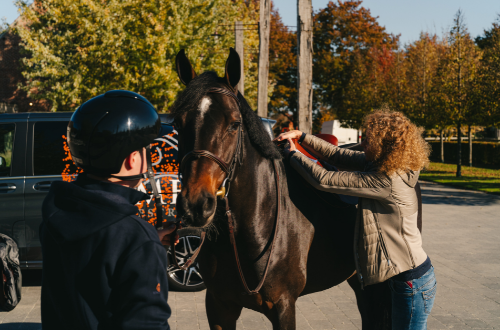
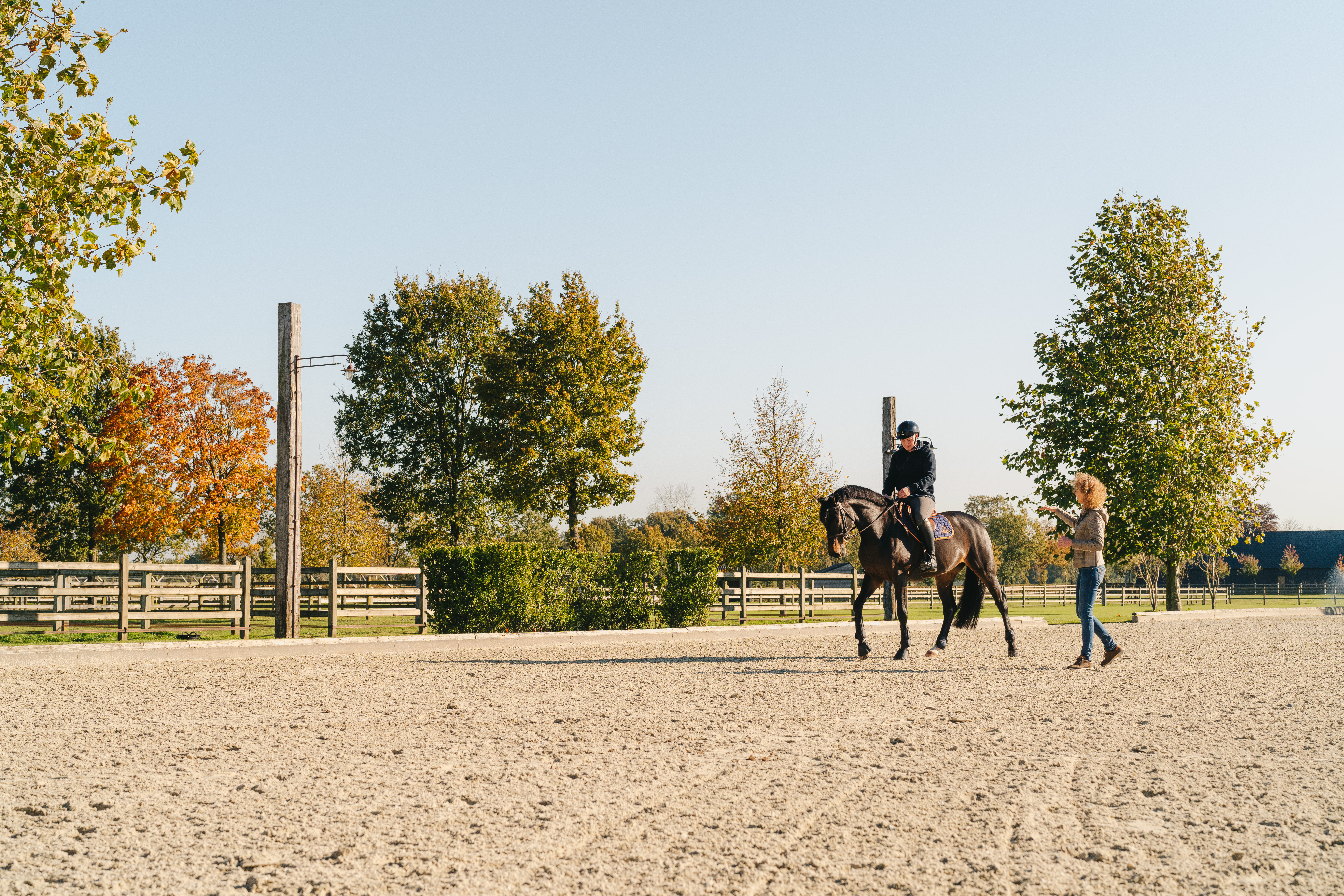
3 signals to RECOGNIZE An ill-FITTING SADDLE from the perspective of the RIDER
On the other hand, from the perspective of the rider, you can also recognize some serious signs:
- If you have trouble keeping your legs steady, this may be due to the position of the saddle.
- If you as a rider cannot adopt a balanced, strong posture, it might be possible your saddle is not fitting properly.
- An ill-fitting saddle can also cause the rider to stay behind the horse's movement while trotting or galloping.
FIND THE PERFECTly FITting SADDLE
Obviously it is extremely important that both horse and rider feel good about the choice for the saddle. The correct riding position and stability thanks to a correctly fitting saddle ensure a relaxed horse that can move freely under the relaxed seat of the rider.
Measuring a new or second-hand saddle is craftsmanship. Our team of qualified saddlers is very knowledgeable and driven in their specialism. They have extensive experience to properly assess which saddle is best for both rider ánd horse. You can also benefit from our professional Master saddler to check your current saddle and make potential adjustments.
After reading, do you have questions about your owns saddle or the position of your saddle?
We are more than happy to help.
Read more about our saddle fitting service.
HOW DO YOU RECOGNIZE
A poorly FITting SADDLE?
Did you know many riding problems and horse's injuries are often caused by a poorly fitting saddle? Save yourself and your horse from this common mistake and do not underestimate the importance of a properly fitting saddle.
But what are the most obvious signs of an ill-fitting saddle? We are happy to help you recognize them.
6 SIGNALS your saddle
is damaging your horse's
health & performance:
On the one hand, you can see signs of a badly fitting saddle in the reaction and condition of your horse:
- The most visible and easily recognizable signs are wounds or chafing under the saddle after riding. Be alert for wounds or rubs while taking care of your horse after riding.
- Does your horse show annoying or grumpy behaviour during saddling or girthing? Of course your horse can experience an off day, just like us. However, if this behaviour occurs more often, it can be a very good reason to have your saddle checked. Without a doubt, you don't like to walk in riding boots that are too small either.
- Does your horse regularly shake its head while riding? This may be caused by the teeth or the bit you are using. Nonetheless, this can also indicate a poorly fitting saddle. Does the head shaking occur mainly in the corners or during twists? This can mean your horse is experiencing pain as a result of a pressure point on the saddle.
- Do you have the impression that your horse is not really relaxed while riding? Maybe you have the feeling your horse is struggling with you? Look for signs like a 'short stride' or difficulty performing specific exercises. This can also be a sign that your saddle does not fit properly and causes pain for your horse.
- If your horse's back shows reduced muscle tone, this could be a sign of a badly fitting saddle as well. You can recognize the limited muscularity of your horse's back, by the visiblity of the spine, or vertebral column. A nicely muscular horse, does not show much of the spine.
- Is your horse's position askew or imbalanced? An uneven shape or bad condition of the hooves can play a major role in the fitting of the saddle. It is important to regularly (every 4 to 6 weeks) have your horse's hooves trimmed by a good farrier. Determining how frequent your farrier visits is different for every horse. It will depend on the growth rate and current health of your horse's hooves.
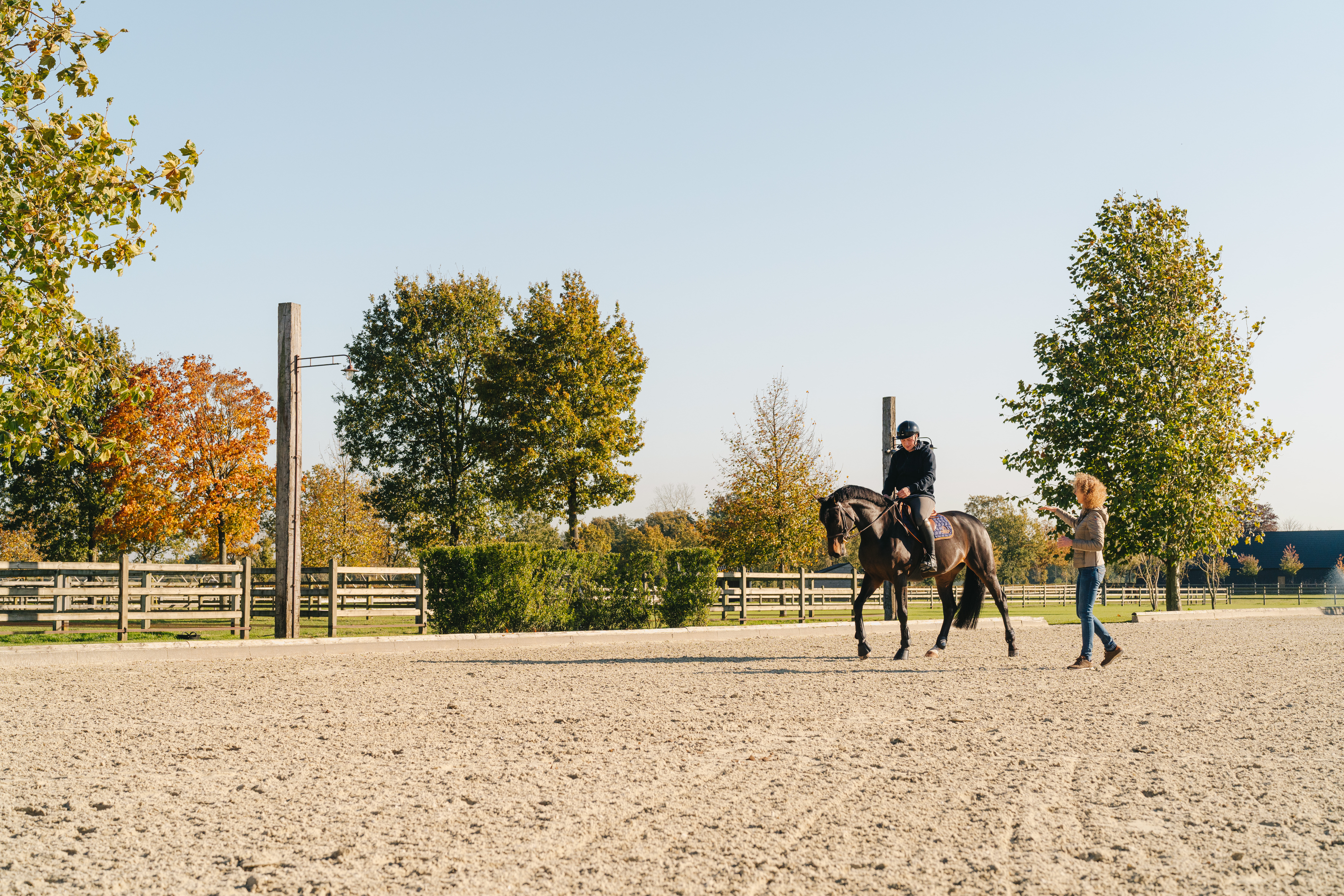
3 SIGNALS TO RECOGNIZE
AN ILL-FITTING SADDLE
FROM THE PERSPECTIVE OF THE RIDER
On the other hand, from the perspective of the rider, you can also recognize some serious signs:
- If you have trouble keeping your legs steady, this may be due to the position of the saddle.
- If you as a rider cannot adopt a balanced, strong posture, it might be possible your saddle is not fitting properly.
- An ill-fitting saddle can also cause the rider to stay behind the horse's movement while trotting or galloping.
FIND THE PERFECTLY FITTING SADDLE
Obviously it is extremely important that both horse and rider feel good about the choice for the saddle. The correct riding position and stability thanks to a correctly fitting saddle ensure a relaxed horse that can move freely under the relaxed seat of the rider.
Measuring and fitting a new saddle or second-hand saddle is craftsmanship. Our team of qualified saddlers is very knowledgeable and driven in their specialism. They have extensive experience to properly assess which saddle is best for both rider ánd horse. You can also benefit from our professional Master saddler to check your current saddle and make potential adjustments.
After reading, do you have questions about your owns saddle or the position of your saddle?
We are more than happy to help.
Read more about our saddle fitting service.
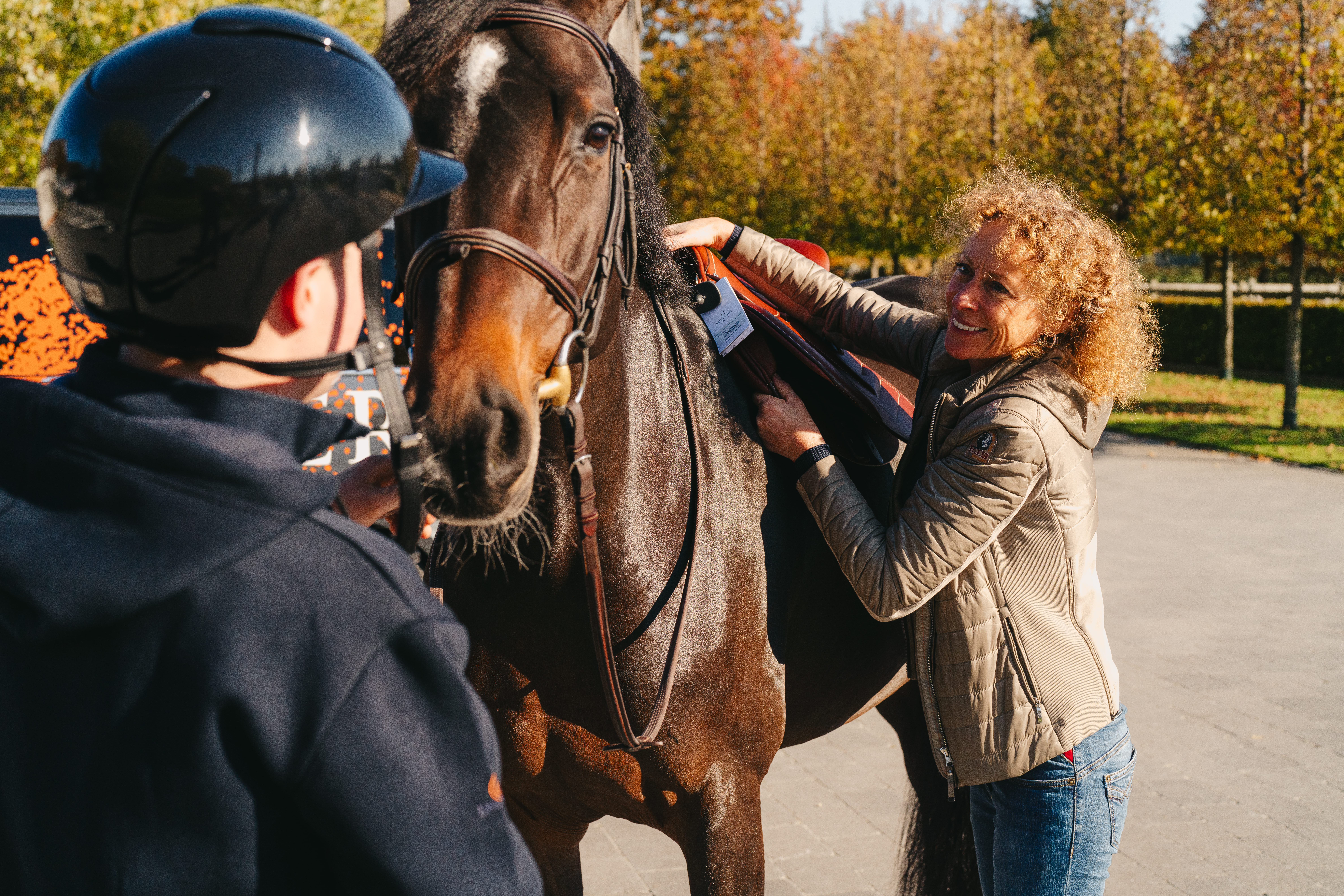
.png)

